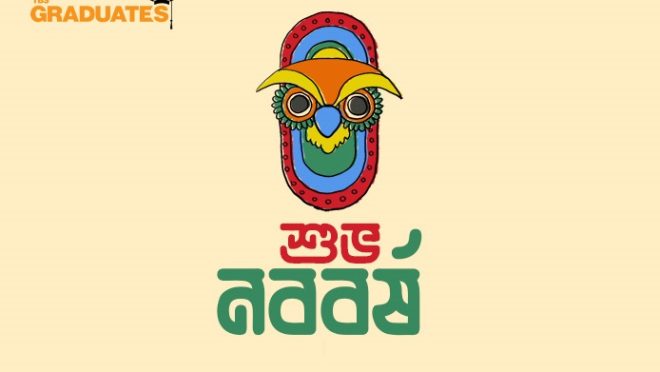Out with the old, in with the new
Out with the old, in with the new

Pohela Boishakh, where the word ‘Pohela’ stands for first and Boishakh being the first month of the Bangali calendar, truly signifies a new beginning for us Bangalis all around the globe. Adorned in various shades of red and white clothing, we embody the new beginning through the purity and sanctity of the colour white, which signals the cultural values of sincerity and simplicity, while the colour of red boasts the spirit and vibrancy of life. While Pohela Boishakh has existed for centuries, the ways of celebrating it have changed over time. The festival has always been linked with the rural life. In the past, Pohela Boishakh morning started with a big feast of panta bhaat which was left to ferment overnight, and eaten with ilish maach in all households. Women would dress themselves in simple white shari with red border, and men would opt for white panjabi. Celebrations would centre around community gatherings where Bangali traditional art and culture such as Baul songs, Jatra (folk theatre), and folk dances unified the and washed away the sorrows and grief of the preceding year. Pohela Boishakh also signified the deep rooted traditional rituals of celebration through offering prayers for well-being and prosperity for the upcoming year. Boishakhi fairs were attended by the common people and the fairs in the past always showcased the best of Bangladeshi culture, starting from potteries, handloom textiles, folk art and handicrafts. The melas were the prime location to indulge in the delectable array of a Bangali cuisine starting from pithas, to mishtis like sandesh, roshgolla, shidol, and payesh. The celebrations in the past for Pohela Boishakh were much more simple.
In recent times Pohela Boishakh has been commercialised with the rise of urbanisation in Bangladesh. In central cities such as Dhaka the festival has been transformed into a mass cultural event which garners tourists and generates huge revenues for businesses which commercialise and capitalise on this festival. When asked what the youth do to celebrate Pohela Boishakh, they said they spend the day attending Boishakhi fairs where different lifestyle brands get centre stage rather than local artisans, attend concerts at different locations of the city or eat at different restaurants that offer festival discounts on cuisines of different countries rather than serving panta bhaat.
However, educational institutions like Dhaka University still celebrate Pohela Boishakh in a grand manner, showcasing the cultural heritage and importance of the festival. There is also a dynamic shift in how people dress for Boishakh, many people express their observance of the festivities through modern interpretations of traditional Bangali attires. The advent of social media and digital technology has also influenced how Pohela Boishakh is celebrated, people share their festive experiences online, participate in virtual events, and use digital platforms to organise and promote various activities. This digital revolution has expanded the reach of Pohela Boishakh celebrations beyond geographical boundaries. Many people have claimed celebrating Pohela Boishakh has not been the same since Covid hit, the excitement to celebrate it has dulled down, and they reminisce about the pre-covid Pohela Boishakhs.
While the ways of celebrations may have changed, the way we always smile and say ‘Shubho Noboborsho’ has always remains the same.


